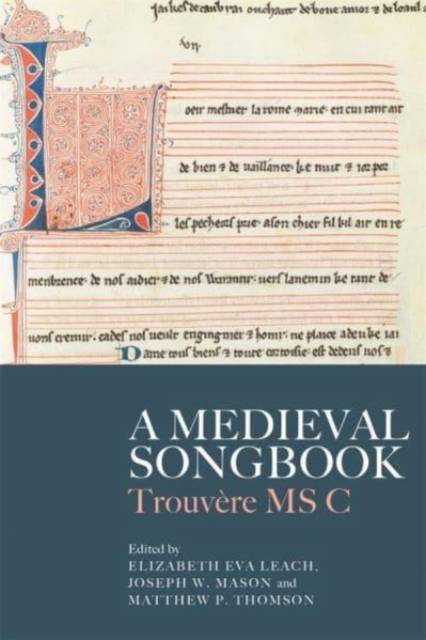
Bedankt voor het vertrouwen het afgelopen jaar! Om jou te bedanken bieden we GRATIS verzending (in België) aan op alles gedurende de hele maand januari.
- Afhalen na 1 uur in een winkel met voorraad
- In januari gratis thuislevering in België
- Ruim aanbod met 7 miljoen producten
Bedankt voor het vertrouwen het afgelopen jaar! Om jou te bedanken bieden we GRATIS verzending (in België) aan op alles gedurende de hele maand januari.
- Afhalen na 1 uur in een winkel met voorraad
- In januari gratis thuislevering in België
- Ruim aanbod met 7 miljoen producten
Zoeken
A Medieval Songbook
Trouvère MS C
€ 177,45
+ 354 punten
Omschrijving
The medieval songbook known variously as trouvère manuscript C or the "Bern Chansonnier" (Bern, Burgerbibliothek, Cod. 389) is one of the most important witnesses to musical life in thirteenth-century France. Almost certainly copied in Metz, it provides the texts to over five hundred Old French songs, and is a unique insight into cultures of song-making and copying on the linguistic and political borders between French and German-speaking lands in the Middle Ages. Notably, the names of trouvères, including several female poet-musicians, are found in its margins, names which would be unknown today without this evidence. However, the manuscript has received relatively little scholarly attention, partly because the songs' musical staves remained empty for reasons now unknown, and partly because of where it was copied.
This collection of essays is the first to consider C on its own terms and from a range of disciplinary perspectives, including philology, art history, literary studies, and musicology. The contributors explore the process of creating the complex object that is a music manuscript, examining the work of scribes and artists who worked on C, and questioning how scribes acquired and organised exemplars for copying. The peculiarly Messine flavour of the repertoire and authors is also discussed, with contributors showing that C frames the tradition of Old French song from a unique perspective. As a whole, the volume demonstrates how in this eastern hub of music and poetry, poet-composers, readers, and scribes interacted with the courtly song tradition in fascinating and unusual ways.
This collection of essays is the first to consider C on its own terms and from a range of disciplinary perspectives, including philology, art history, literary studies, and musicology. The contributors explore the process of creating the complex object that is a music manuscript, examining the work of scribes and artists who worked on C, and questioning how scribes acquired and organised exemplars for copying. The peculiarly Messine flavour of the repertoire and authors is also discussed, with contributors showing that C frames the tradition of Old French song from a unique perspective. As a whole, the volume demonstrates how in this eastern hub of music and poetry, poet-composers, readers, and scribes interacted with the courtly song tradition in fascinating and unusual ways.
Specificaties
Betrokkenen
- Uitgeverij:
Inhoud
- Aantal bladzijden:
- 286
- Taal:
- Engels
- Reeks:
- Reeksnummer:
- nr. 24
Eigenschappen
- Productcode (EAN):
- 9781783276523
- Verschijningsdatum:
- 18/02/2022
- Uitvoering:
- Hardcover
- Formaat:
- Genaaid
- Afmetingen:
- 156 mm x 234 mm
- Gewicht:
- 580 g

Alleen bij Standaard Boekhandel
+ 354 punten op je klantenkaart van Standaard Boekhandel
Beoordelingen
We publiceren alleen reviews die voldoen aan de voorwaarden voor reviews. Bekijk onze voorwaarden voor reviews.








